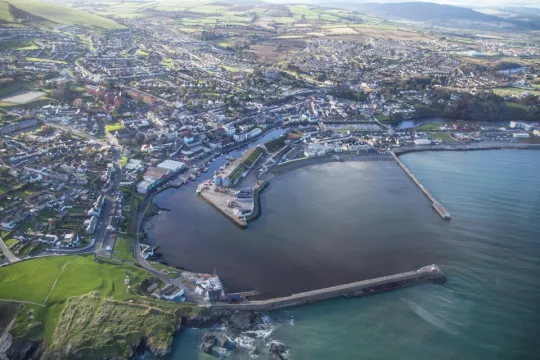Gaelic: language, culture and tradition

introduction
Gaelic, a branch of the Celtic languages, is an integral part of the cultural identity of Ireland, Scotland and the Isle of Man. Despite the difficulties it has faced throughout its history, the language has seen a resurgence of interest in recent decades thanks to significant efforts to preserve and revitalize it. In this blog we will explore the history of Gaelic, its cultural significance, efforts to keep it alive, and its presence today.
Origin and development of Gaelic
The Gaelic languages belong to the Celtic language family, which in turn is part of the larger Indo-European language family. The Gaelic languages are divided into three main branches:
- Irish Gaelic (Gaeilge) : native language of Ireland.
- Scottish Gaelic (Gàidhlig) : native language of Scotland.
- Manx (Gaelg) – the native language of the Isle of Man.
Irish Gaelic
Irish Gaelic is the most widely spoken Celtic language and has a rich literary and oral tradition. Its origins date back to the first Celts, who arrived in Ireland around 500 BC. Over time, the language evolved and was divided into three main periods: Old Irish, Middle Irish and Modern Irish.
Old Irish, spoken between the 6th and 10th centuries, is the period when the first Gaelic texts, including laws and poetry, were written. In central Ireland (10th-12th centuries) a rich literature emerged, in particular the famous texts of the Irish mythological cycle. Modern Irish began in the 13th century and is the time when the language took the form it has today.
Scottish Gaelic
Scottish Gaelic, derived from Irish Gaelic, began to develop in Scotland in the early Middle Ages. Gaelic speakers settled in Scotland and brought their language and culture with them. Over time, Scottish Gaelic has developed its own distinctive features, although it remains mutually intelligible with Irish Gaelic.
The Isle of Man
Although less well-known, Manx is the Gaelic language of the Isle of Man. The language experienced a significant decline in the 20th century, with the last native speaker dying in 1974. However, there has been renewed interest and efforts to revitalize Manx, and educational programs and communities have been dedicated to its preservation.
Cultural importance of Gaelic
Gaelic is not only a means of communication, but also a vector of the cultural identity and traditions of its speakers. The language is inextricably linked to the music, poetry, dance and mythology of Gaelic cultures.
Literature and mythology
Gaelic has produced a rich literary tradition that includes epics, poetry and prose. In Ireland, for example, the Ulster Cycle and the Fenian Cycle are two of the most important collections of mythology and legends. These stories, passed down orally for centuries, were eventually written down and remain an integral part of Irish culture.
Music and dance
Music and dance also play a crucial role in Gaelic culture. Gaelic is the language of many traditional songs and ballads that have been passed down through the generations. In Scotland, the céilidh (a social gathering with music and dancing) is a living tradition that uses Gaelic for singing and dancing.
Efforts to preserve Gaelic
Over the centuries, Gaelic has faced many challenges, including political oppression, emigration and the influence of other languages such as English. However, there is a renewed interest in preserving and revitalising the language.
Education and media
In Ireland, the government has implemented measures to promote the use of Gaelic in education. Gaelic schools (Gaelscoileanna) provide primary and secondary education in Gaelic. In addition, Gaelic media outlets such as TG4 (an Irish television station) and RTÉ Raidió na Gaeltachta (a radio station) play a crucial role in promoting the language.
In Scotland, the Bòrd na Gàidhlig is the public body responsible for promoting the use of Scottish Gaelic. Gaelic schools and language immersion programmes are also on the rise, and BBC Alba, a Gaelic-language television channel, offers a variety of programmes in the language.
Isle of Man Renaissance
Manx has made a remarkable comeback thanks to the efforts of local communities and organisations committed to its preservation. Manx teaching has been reintroduced in schools and interest in learning and using the language in everyday life is growing.
Presence of Gaelic today
Today, Gaelic remains an integral part of cultural life in Ireland, Scotland and the Isle of Man. Although the number of speakers has declined compared to ancient times, there is a renewed interest in learning and preserving the language.
Gaeltacht and Gàidhealthachd
In Ireland, the so-called Gaeltacht regions are areas where Gaelic is predominantly spoken. These regions receive government support to maintain and promote the use of the language in daily life. Also in Scotland, the Gàidhealtachd areas are areas where Scottish Gaelic is widely spoken.
Cultural events
Cultural events such as music and dance festivals also play an important role in preserving Gaelic. Festivals such as Fleadh Cheoil na hÉireann in Ireland and the Royal National Mòd in Scotland celebrate Gaelic music, dance and poetry and attract participants and spectators from all over the world.
Online courses and programs
Technological advancements have made learning Gaelic easier. There are many online courses, mobile apps, and digital resources for people who want to learn the language. Platforms such as Duolingo and Rosetta Stone offer Irish and Scottish Gaelic courses, making learning easier for a global audience.
Diploma
With its deep roots and rich cultural heritage, Gaelic is much more than a language. It is a symbol of the identity and resilience of the people of Ireland, Scotland and the Isle of Man. Despite historical challenges, there are renewed efforts to preserve and revitalise this language.
Through education, media, cultural events and modern technology, Gaelic remains a vibrant and integral part of cultural life in the areas where it is spoken. For those interested in learning and discovering one of the Celtic languages, there are many opportunities to immerse themselves in the world of Gaelic and discover the beauty and richness of this ancient language.